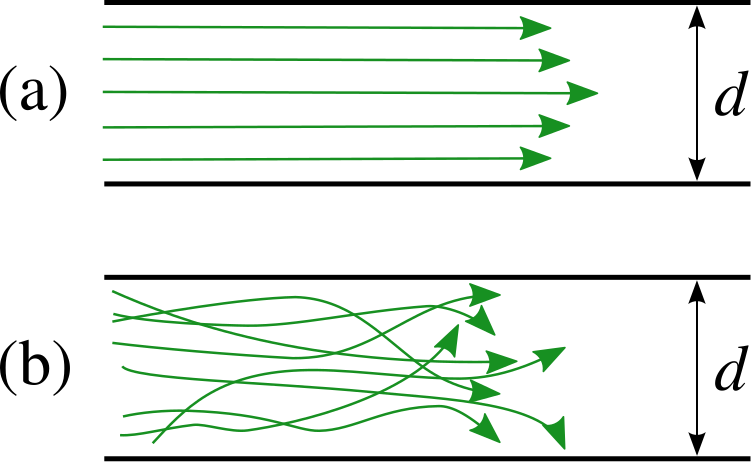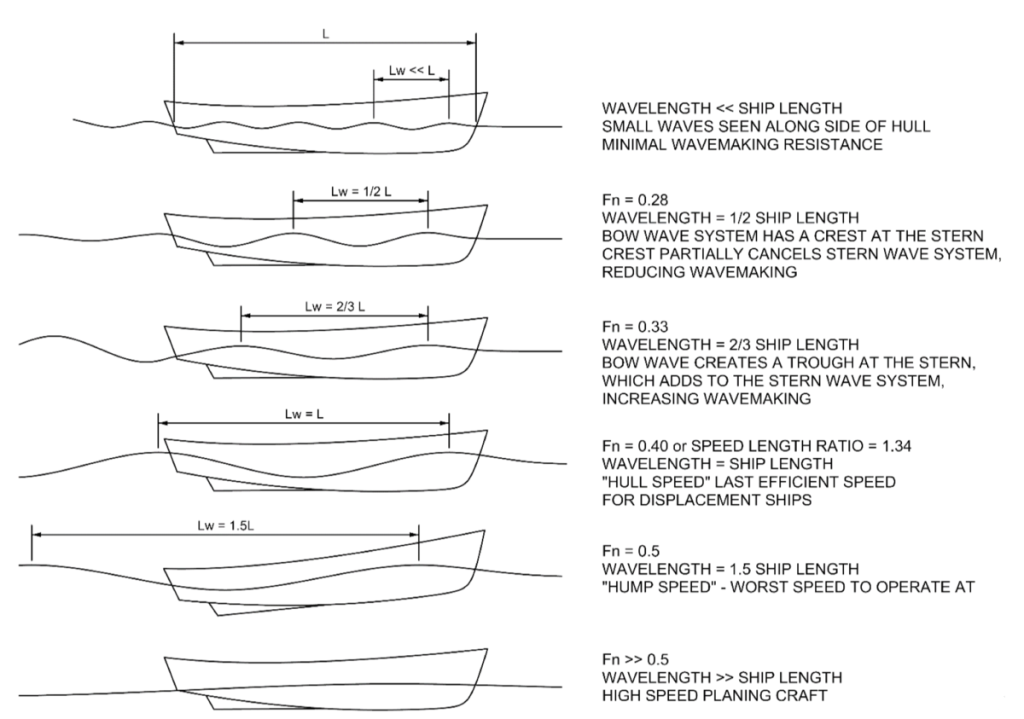1. Dimensionless Numbers
Before delving into a more detailed discussion of hydrodynamic loads, particularly the forces resulting from ocean water motion, it is essential to review and introduce several important dimensionless numbers from fluid mechanics. These numbers are invaluable tools for categorizing different types of loads on structures, guiding the selection of appropriate equations and modeling approaches for predicting hydrodynamic forces in various scenarios. In fluid mechanics, dimensionless numbers are typically represented by two letters, with the first letter capitalized. This convention sets them apart from most other variables in science and engineering, making it a useful hint that the term refers to a dimensionless quantity.
Although there are numerous dimensionless numbers in fluid mechanics, we will focus on three that are particularly relevant for bodies interacting with fluid flow: the Reynolds number, the Froude number, and the Keulegan-Carpenter number.
Reynolds
The Reynolds number, ![]() , compares inertial to viscous forces. Often its value is used to determine whether a flow if laminar or turbulent (Figure 9.1.1). The Reynolds number plays a crucial role in predicting the behavior of fluid flows around bodies. When the Reynolds number is low, the flow tends to be laminar, where the fluid moves smoothly. When Re is high, the flow becomes turbulent, characterized by chaotic fluctuations. The dividing line, or the point where the flow transitions to turbulence, depends on whether flows are external (going around an object), or internal (through an object, like a pipe).
, compares inertial to viscous forces. Often its value is used to determine whether a flow if laminar or turbulent (Figure 9.1.1). The Reynolds number plays a crucial role in predicting the behavior of fluid flows around bodies. When the Reynolds number is low, the flow tends to be laminar, where the fluid moves smoothly. When Re is high, the flow becomes turbulent, characterized by chaotic fluctuations. The dividing line, or the point where the flow transitions to turbulence, depends on whether flows are external (going around an object), or internal (through an object, like a pipe).

Re is given by mathematically the equalities below, where inertial forces are in the numerator and viscous forces are in the denominator.
![]()
The first fractional representation includes ![]() is flow velocity [m/s],
is flow velocity [m/s], ![]() is a characteristic length [m] (often a diameter, hence the letter choice),
is a characteristic length [m] (often a diameter, hence the letter choice), ![]() is kinematic viscosity [
is kinematic viscosity [ ![]() ]. The second fractional equality also includes
]. The second fractional equality also includes ![]() and
and ![]() , but differs with its use of
, but differs with its use of ![]() for density [
for density [ ![]() ] and dynamic viscosity
] and dynamic viscosity ![]() [
[ ![]() ]. It is a straightforward exercise to confirm that the Reynolds number is dimensionless. I encourage you to prove it to yourself by completing the dimensional analysis.
]. It is a straightforward exercise to confirm that the Reynolds number is dimensionless. I encourage you to prove it to yourself by completing the dimensional analysis.
The Reynolds number helps identify the flow regime, and in later sections, we will discuss how it relates to predicting loads on structures interacting with moving water.
Note that Reynolds does not include an apostrophe, as it is named after Osborne Reynolds, whose last name ends in “s” and is not possessive.
Froude
The Froude number, Fr, describes the resistance of a body, partially submerged, moving through fluid. It is given by the ratio of flow velocity (u) over the square root of the product of gravity [m/s2] and characteristic length [m]. Again, it is worthwhile to confirm that the units cancel out to return a dimensionless number.
![]()
The Froude number is crucial in understanding the relationship between a body’s speed and the behavior of the surrounding waves, which affects resistance and energy efficiency.
A good example of a characteristic length (L) is from the bow to the stern of a ship, while u is the relative speed between the ship and the water, as depicted in Figure 9.1.2 below. The changing size of the wavelength affects how the boat travels through the waves. Perhaps most notably a boat can reach “hump speed” where the boat tilts upwards, riding on the backside of a wave crest, the least efficient speed at which to travel.

The Froude number categorizes flows as:
- Subcritical (Fr < 1): Waves propagate both upstream and downstream.
- Critical (Fr = 1): The flow is at the threshold where wave velocity matches the flow velocity.
- Supercritical (Fr > 1): The flow is faster than wave velocity, and information about wave motion does not propagate upstream.
The Froude number is particularly useful in scaling hydrodynamic analysis between model and full scale, especially in wave tank experiments designed to study the performance of structures such as boats, wind turbines, and offshore platforms.
Keulegan-Carpenter
Finally, the Keulegan-Carpenter number, KC, compares the relative importance of drag over inertia forces, using the following equation
![]()
where ![]() is the amplitude of the velocity of wave oscillation, T is the period of wave oscillation, and D is the diameter of the object in flow. The Keulegan-Carpenter number is specifically concerned with bodies in oscillating flow, such as those subjected to regular wave motion.
is the amplitude of the velocity of wave oscillation, T is the period of wave oscillation, and D is the diameter of the object in flow. The Keulegan-Carpenter number is specifically concerned with bodies in oscillating flow, such as those subjected to regular wave motion.
- When KC is small, inertia forces dominate.
- When KC is large, drag forces are the primary contributor to the load on the body.
The Keulegan-Carpenter number is useful for understanding how wave-induced forces affect structures like offshore platforms and moored vessels, where oscillatory wave motion plays a significant role in determining the hydrodynamic loading.

